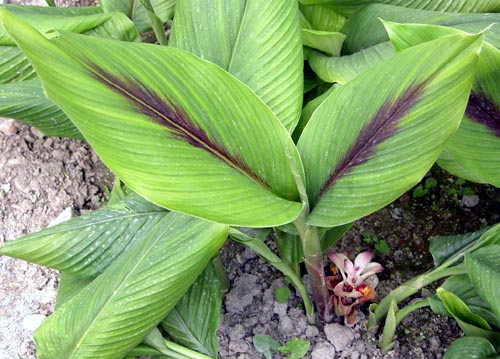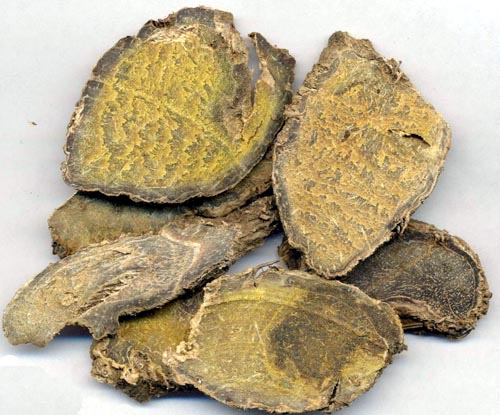The source is from axial rhizome of Curcuma Kwangsinensis S. G. Lee et C. F. Liang, C. aromatica Salisb. and C. zedoaria Rosc., family Zingiberaceae. The medicinal material is mainly produced in areas of Guangxi, Sichuan, Guangdong and Yunan. Dug and collected in autumn and winter, steamed or boiled until to its center, and then dried and cut into pieces. The crude or the prepared with vinegar is used.
Medicinal Properties: Pungent and bitter in flavor, warm in nature and attributive to the liver and spleen meridians.
Actions: Remove blood stasis, activate qi and alleviate pain.

Application
1. It is used for amenorrhea and abdominal pain and mass caused by stagnation of qi and blood stasis. Its action is similar to that of Sanleng (Rhizoma Sparganii), but the action of removing blood stasis is weaker and the action of circulating qi to arrest pain is stronger than that of Sanleng (Rhizoma Sparganii). For the former, combined with Sanleng (Rhizoma Sparganii ), Chuanxiong (Rhizoma Chuanxiong ), and Niuxi ( Radix Achyranthis Bidenatatae), etc. ; for the latter, it is combined with Sanleng ( Rhizoma Sparganii ), Danshen ( Radix Salviae Miltiorrhizae ) , and Biejia (Carapax Trionycis ) , etc..

2. For stagnation of food and fullness and distention of epigastric abdomen due to irregular diet and failure of spleen's transportation and transformation, it is usually combined with Sanleng (Rhizoma Sparganii), Muxiang (Radix Aucklandiae ), Zhishi ( Fructus Aurantii Immaturus), and Shanzha ( Fructus Crataegi), etc. ; for the above syndrome accompanied by weakness of spleenqi, yet combined with Dangshen (Radix Codonopsis ), Baizhu (Rhizoma Atractylodis Macrocephalae) and others that can enrich spleen-qi.
Usage and Dosage:
3- 10 g is used in decoction, and the herb prepared with vinegar can strengthen the action of alleviating pain.
Notes:
Contraindicated in women with excessive menstruation and pregnant women.v







